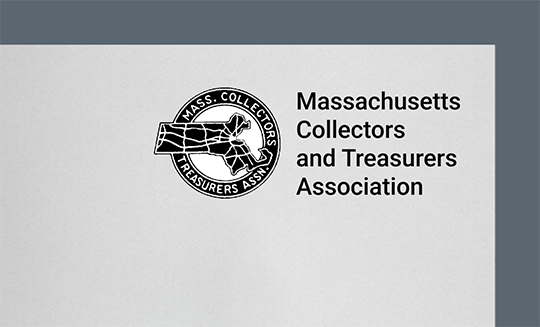Many associations struggle to improve their membership growth and retention. Within your offices and before your boards, you search endlessly for one idea to reverse your membership fortune. Unfortunately, there’s no silver bullet.
To successfully attract and keep members, you must continually remind yourselves membership marketing is a process. No single “super” idea turns everything around. Until you face this, you continue to repeat the mistakes of the past.
There are three distinct phases of membership marketing:
- First, you must understand your membership.
- Second, you must attract new members to your organization.
- Third, you must keep those members.
Understanding your membership.
When building a membership recruitment program, getting bogged down in complex marketing theory and fancy ideas is easy. Before you commit your valuable time and resources, consider three questions:
- Who are my members?
- What problems do my members face?
- How does my association solve these problems?
Once you have answered these questions, you understand how to target your membership recruitment activities. The individuals or companies which have already joined provide insight into what individuals or companies might join.
There are countless ways of studying membership. Begin by asking the question: What are the demographics of my membership? Demographic information typically includes some or all of the following: age, income, education, geographic location, title, length of membership and type of membership. While collecting many different types of information is possible, try to focus on areas to help you identify and understand your current and potential members. A common means of collecting such data is to capture this information in your association management software.
Next, answer the question: What problems do your members face? The only way to understand your members’ problems is to ask them. Traditionally, this is done every three to five years as part of the strategic planning process. Unfortunately, your members face these problems every day.
It’s a simple process to distribute a brief survey each year to your membership. Allow your members to identify and rank issues of concern. You then adjust your programming and other activities to reflect the priorities of your members. Optimally, you execute this survey with your budget process, factoring in changing program needs.
After determining the problems your members face, begin deciding how to address these issues. Once you have an accurate demographic picture of your membership and a strong understanding of the issues they are concerned about, assess whether the priorities, programs and services currently provided are consistent with your members’ needs.
Recruiting new members.
There are many different tactics for recruiting new members. Tried and true methods include direct mail, telemarketing, member-get-a-member programs, and so on. Focus on how your organization addresses the problems of the potential member, individuals or companies which fit the profile you have developed. Then, each of these programs will be incrementally more successful.
The following 5-step process can be used to carry out major membership marketing programs.
- Analysis. First, using the information gathered through the membership profile process, establish your current membership status. What’s your retention rate? What’s your new member growth rate? What’s your current financial situation? The purpose of this step is to identify the current situation of the association.
- Goal establishment. Using realistic assessments of market potential and association capabilities, establish end goals for your membership marketing program. How many new members do you realistically plan on acquiring during the length of the program? What are the financial results you feel are necessary? This goal provides a target by which to measure the success of your program.
- Strategy development. Your marketing strategy is the defining means to acquire new members. Will you focus on price or offer new opportunities available nowhere else? Will the quality of your education be superior to other competing organizations? Often, once you have analyzed your membership, the strategy for success is obvious. If not, test several strategies on an incremental basis before you invest significant resources on an overall program.
- Task development. Many marketers say that a successful marketing program is 10% strategy and 90% execution. Your goal should be to create a marketing program you and your association competently achieves. Be realistic, though. Break down the major tasks associated with your marketing plan. Identify the individual components.
- Task assignment. Review the major tasks necessary to achieve your marketing objectives. Assign these tasks to the staff responsible. Allow everyone to review the entire plan so each individual involved is familiar with the overall strategy and end goals. Work with each individual to identify interim measurements to allow you to track success. This gives you the information necessary to make strategy or program changes.
Retaining your members.
A common mistake associations make is to focus on new member recruitment and forget member retention. New member marketing is exciting and appealing. You get to develop marketing plans, create digital brochures and write fascinating web copy. Existing members, while far more beneficial to the organization, get a generic thank you note with their dues invoice.
Your organization should invest more of its resources on member retention than recruitment. Your goal should be to increase the affiliation of these members.
How do you recognize declining affiliation? You discover the number of volunteers is decreasing. Your member retention rate is falling. Each of these are symptoms the organization is no longer maintaining a relationship with the current member.
There are two areas which take priority to retain members.
First, the organization must continue to adapt to the changing needs of members. Use the tactics outlined above to continually re-educate yourself on the problems and issues faced by your members and how the association solves them.
Second, focus on improving your member service. The quality of your member service is one of the primary factors influencing the decision to retain a membership. Oftentimes, it’s the only personal interaction between the member and your organization. Is this interaction enjoyable or convenient? Does the staff seem to care about their work and the problems they face? Are phone calls and emails returned promptly? Are commitments delivered on time?
You must commit to these activities and build these initiatives into your budget to the extent your resources allow. As the positive interaction between your members and your association builds, their affiliation with the goals and programs of the association increases.
Over time, this allows your association to try new initiatives or use this support for more intangible activities, such as government affairs or public relations activities.
The bottom line? As stated earlier, there’s no silver bullet. You must pursue the marketing process methodically. If you make a commitment to this process, your reward is to sit back and enjoy the results.
Source: Association Laboratory, a national consulting firm specializing in R&D of marketing and organizational strategy for associations.






